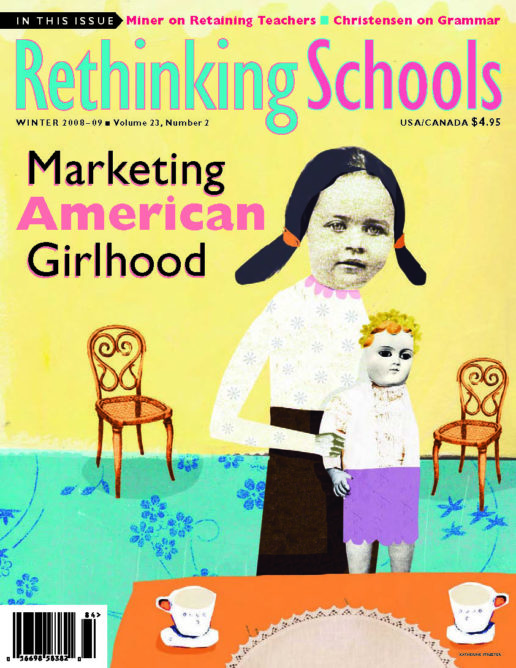Preview of Article:
Move Over, Sisyphus
Teaching grammar and poetry
Illustrator: Roxanna Bikadoroff
Let me surrender to a moment of truth telling: I still struggle to name the parts of speech and identify what’s wrong in multiple-choice sentences on grammar tests. I still don’t know how to use lie and lay correctly, and once in a while, I get the apostrophe in the wrong spot. But I know how to write — most of the time. And, when I’m “done” with a piece of writing, I know where to go to fix my problems.
My students suffer from similar lapses in their grammar and punctuation knowledge. As a teacher, I can either spend time drilling students over and over again on the same grammar rules they seem to forget when it comes time to write, or I can spend my precious minutes teaching them how to use language more effectively.
Poetry as Grammar Text
When I was a new teacher, I dutifully pulled out the grammar textbooks, taught — and learned — parts of speech and grammar “demons” lessons. I noticed that students could get questions right on my ditto sheets (old days) and even pass the end-of-chapter grammar tests, yet still make the same errors in their writing. My students’ writing was stiff and unnatural as if they were wearing a too-small suit. Over the years I learned that my work with students on their poetry led to a stronger grasp of parts of speech, especially verbs, nouns, and adjectives, than my old worksheets. But, even more significantly, my students’ language jumped off the page. They slide their verbal dexterity from poetry to essays and narratives.

